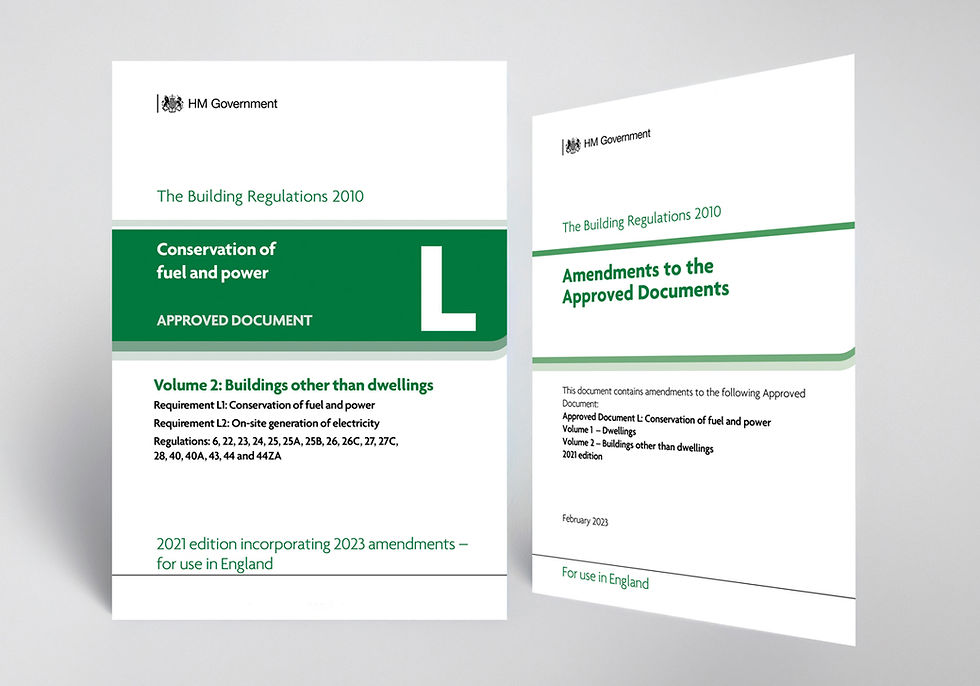What Is an Energy Performance Certificate (EPC)?
- info1864854
- Apr 27
- 2 min read
Updated: May 4

Energy performance certificates (EPCs) are a crucial part of the new build process in the UK. They provide an official rating of a property's efficiency and are a legal requirement for all newly built homes before they can be sold or rented. With increasing focus on sustainability and reducing carbon emissions, EPCs have become more significant than ever for homeowners, developers, and policymakers.
What is an Energy Performance Certificate?
An EPC assesses the efficiency of a property on a scale from A (most efficient) to G (least efficient). It provides information on a building's energy use, typical energy costs, and recommendations for improving energy efficiency.
The EPC includes two key ratings:
Energy efficiency rating - How efficiently the property uses energy.
Environmental impact rating - The home's impact on the environment, primarily in terms of carbon dioxide (CO2) emissions.
An EPC is valid for ten years, but for new builds, it must be issued before the building is completed.
EPCs and New Builds
For new builds, EPCs are based on Standard Assessment Procedure (SAP) calculations which are carried out at the design stage and once construction is complete. SAP assessments consider factors such as:
Insulation levels
Heating systems
Renewable energy technologies (like solar panels or heat pumps).
Ventilation systems
Air permeability (how airtight the building is).
These calculations ensure that the building meets the energy efficiency standards set out in Part L of the Building Regulations.
Why Are EPCs Important for New Builds?
EPCs serve several vital purposes:
Legal requirement - It is a legal obligation to provide an EPC when selling or renting a new build property.
Marketability - Higher EPC ratings (A or B) can make homes more attractive to buyers, who are increasingly energy conscious and looking to lower their utility bills.
Sustainability goals - EPCs help drive the Government's targets for reducing carbon emissions and improving the UK's overall energy performance in the built environment.
Mortgage and lending - Some lenders offer green mortgages, where buyers can access better terms if they purchase energy efficient homes.
How Are EPCs Produced?
The process typically involves:
Design stage assessment - When a new build is designed, SAP calculations predict the building's energy efficiency.
As-built SAP assessment - Once the property is completed, an assessor updates the SAP calculations based on the actual construction details and materials used.
EPC issuance - After the as-built assessment, the EPC is generated and logged on the national EPC register.
Improving EPC Ratings in New Builds
Developers are encouraged to integrate features that will enhance EPC ratings, including:
High levels of insulation in walls, roofs, and floors.
Efficient heating systems, such as condensing boilers or air source heat pumps.
Renewable energy installations, like photovoltaic panels.
Double or triple-glazed windows with low emissivity coatings.
Mechanical ventilation with heat recovery systems (MVHR).
Many new homes built today achieve EPC ratings of A or B, far exceeding the average rating for older properties.
Conclusion
EPCs are an essential part of the new build process in the UK, ensuring that homes meet modern standards of energy efficiency. They provide vital information for homebuyers, support the country's environmental goals, and encourage innovation in building practices. As the focus on sustainability grows, EPCs will continue to play a central role in shaping the future of residential construction.





